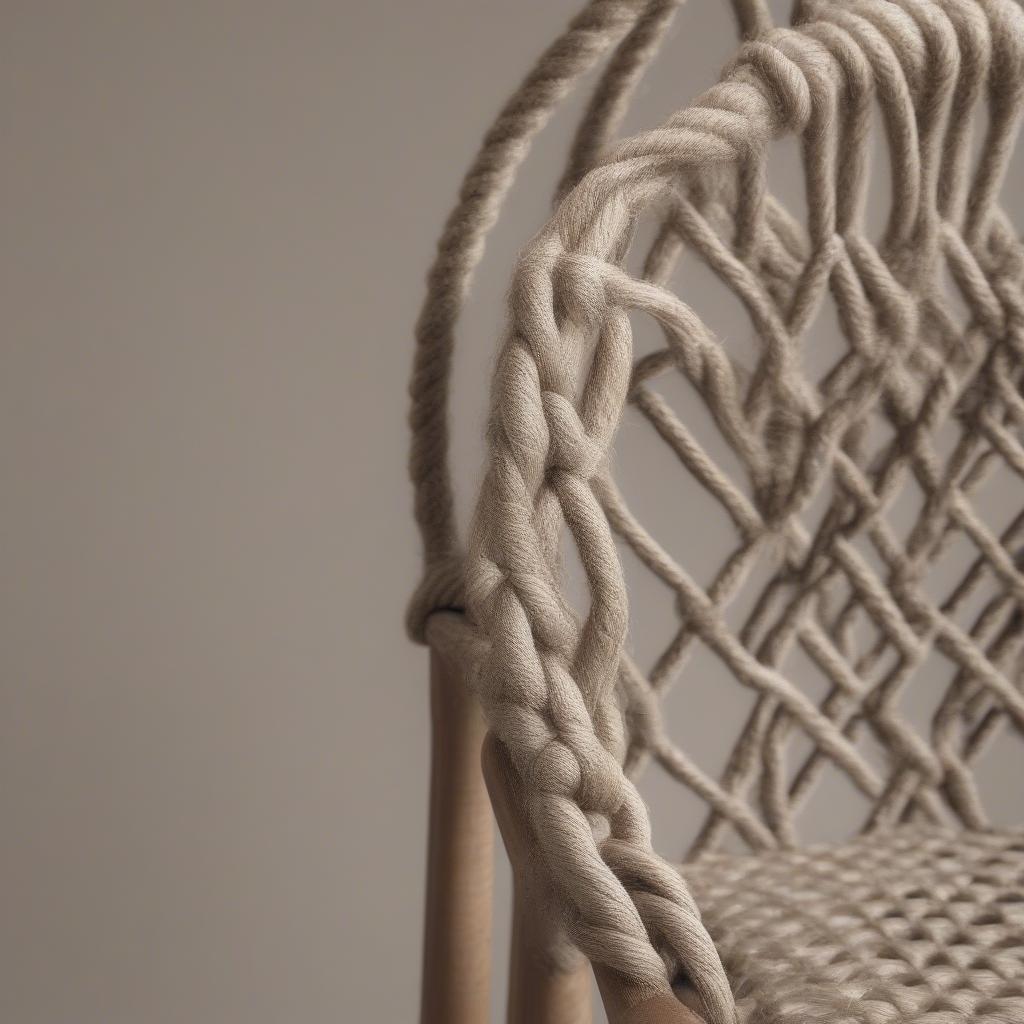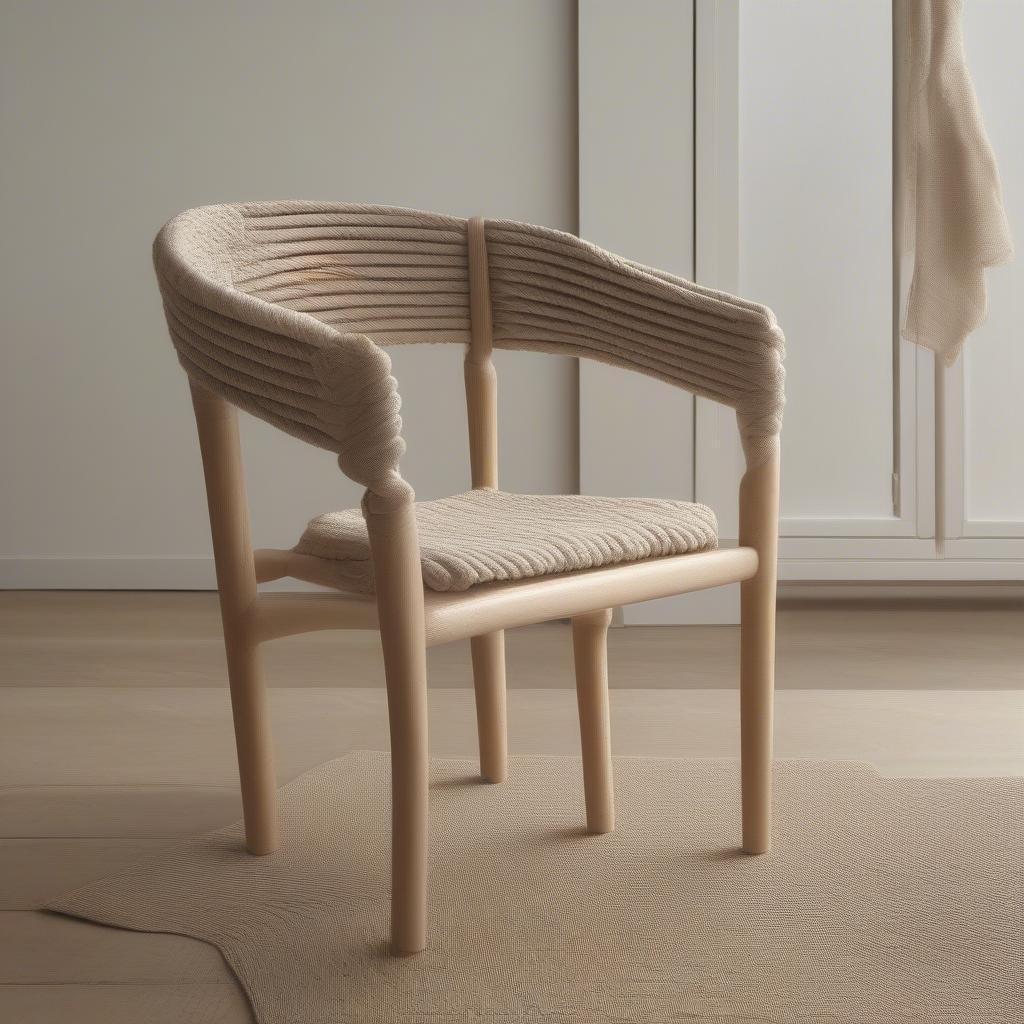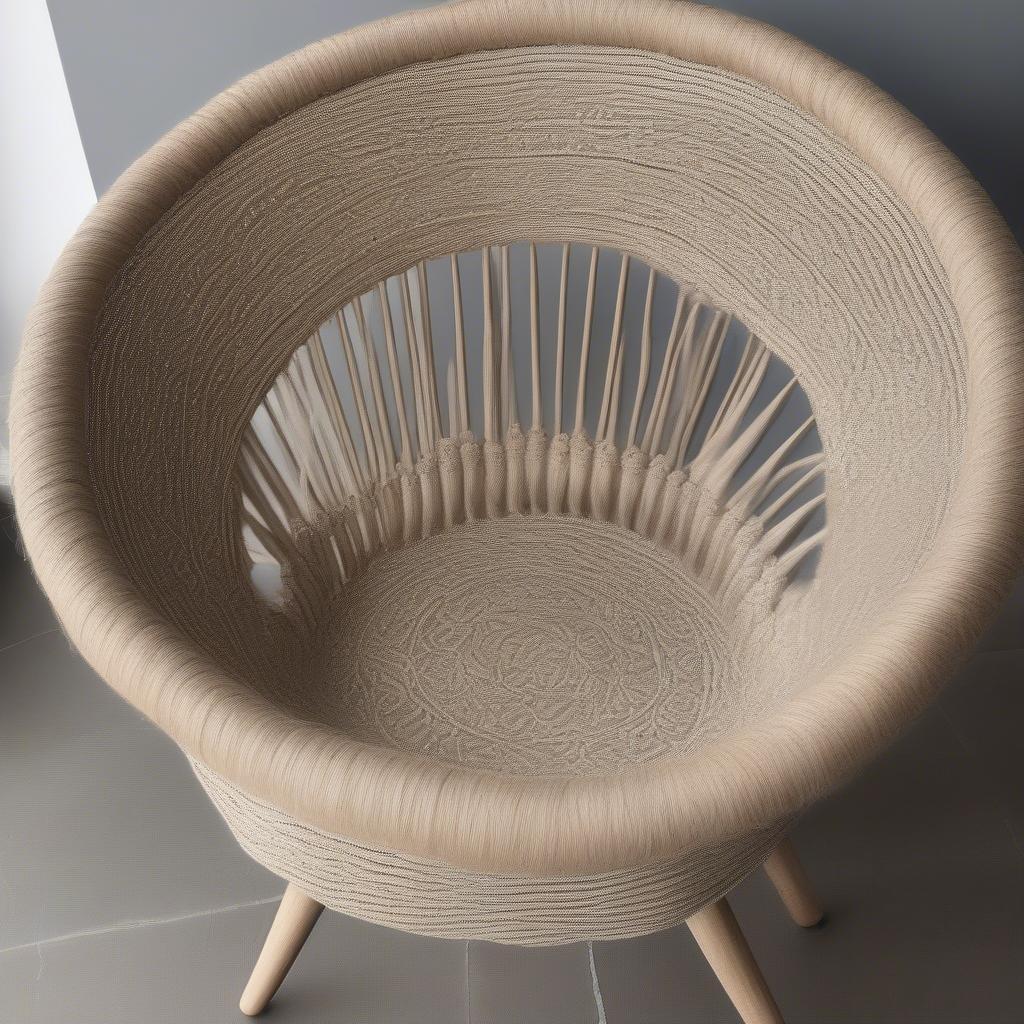Weave Chair
Mastering Chair Weaving Rope: A Comprehensive Guide
Chair Weaving Rope is a captivating craft that transforms ordinary chairs into unique, handcrafted masterpieces. Whether you’re a seasoned weaver or just starting out, understanding the nuances of chair weaving rope opens up a world of creative possibilities. This guide explores everything from choosing the right rope to mastering essential techniques and even delving into the history and cultural significance of this timeless craft.  Close-up of hands weaving rope onto a chair frame
Close-up of hands weaving rope onto a chair frame
Choosing the Right Chair Weaving Rope
Selecting the appropriate rope is crucial for successful chair weaving. Various factors come into play, including durability, texture, and aesthetic appeal. Natural fibers like jute, sisal, and cotton offer a rustic charm, while synthetic ropes like nylon and polypropylene provide enhanced strength and weather resistance. Consider the chair’s intended use and placement when making your choice. For indoor chairs, natural fibers might be preferred for their comfort and breathability. Outdoor furniture, however, benefits from the resilience of synthetic ropes. seat on chair with rope weaving
Understanding Rope Properties
Different ropes possess unique characteristics. Jute, for instance, is known for its coarse texture and biodegradable nature, making it a sustainable option. Sisal, derived from the agave plant, boasts exceptional strength and resistance to saltwater, making it suitable for coastal environments. Cotton, a softer and more pliable fiber, is ideal for creating intricate patterns. Nylon and polypropylene, on the other hand, offer superior durability and are resistant to mildew and UV rays.
Essential Chair Weaving Rope Techniques
Several techniques are commonly used in chair weaving rope. The most basic and widely practiced is the wrap and tuck method, which involves wrapping the rope around the chair frame and tucking it under itself to secure it in place. This technique allows for creating simple yet sturdy weaves. More intricate patterns can be achieved with techniques such as the herringbone weave, which creates a distinctive V-shaped pattern, and the Danish cord weave, known for its complex and decorative appearance.  Various patterns achieved with chair weaving rope
Various patterns achieved with chair weaving rope
Getting Started with Chair Weaving Rope
Before starting your chair weaving rope project, gather the necessary tools and materials. This includes the chosen rope, a pair of sharp scissors, a measuring tape, and a sturdy chair frame. Begin by measuring the frame to determine the required rope length. It’s always recommended to have extra rope on hand. types of rope for weaving chair walmart
The History and Cultural Significance of Chair Weaving
Chair weaving, using various materials including rope, has a rich history spanning centuries and cultures. From ancient Egyptian furniture adorned with woven papyrus to traditional rush-seated chairs in Europe, this craft has played a significant role in everyday life.
“Chair weaving is not just a craft; it’s a connection to our past,” says Eleanor Vance, a renowned furniture historian. “It’s a tangible link to generations of artisans who have passed down their skills and knowledge.” weaving rope for chair
Modern Interpretations of Chair Weaving Rope
Today, chair weaving rope continues to evolve, with contemporary artists and designers pushing the boundaries of this traditional craft. New materials and innovative techniques are being explored, resulting in unique and eye-catching furniture pieces. wire chair weaving near me
“The beauty of chair weaving lies in its versatility,” adds James Cartwright, a furniture designer specializing in woven pieces. “It allows for endless creative expression and customization.” rush weave dining chair
Conclusion
Chair weaving rope is a rewarding craft that combines artistry and functionality. Whether you’re restoring a vintage chair or creating a modern statement piece, mastering this technique allows you to create unique and personalized furniture. By choosing the right rope, understanding essential techniques, and appreciating the rich history of this craft, you can transform ordinary chairs into extraordinary works of art. Remember, chair weaving rope is not just about creating furniture; it’s about connecting with a timeless tradition.  A completed chair with a woven rope seat
A completed chair with a woven rope seat
FAQ
- What type of rope is best for chair weaving? The best type of rope depends on the chair’s intended use and desired aesthetic. Natural fibers are great for indoor chairs, while synthetic ropes offer durability for outdoor use.
- What is the easiest chair weaving rope technique? The wrap and tuck method is the most basic and easiest technique to learn.
- Where can I find chair weaving rope supplies? Craft stores, online retailers, and even some hardware stores carry chair weaving rope supplies.
- How long does it take to weave a chair seat with rope? The time varies depending on the chair size, the complexity of the pattern, and your experience level.
- Can I weave a chair seat with any type of rope? While you can experiment with different ropes, some are better suited for chair weaving than others due to their durability and texture.
- What tools do I need for chair weaving rope? You’ll need rope, scissors, a measuring tape, and a sturdy chair frame.
- Are there any online resources for learning chair weaving rope techniques? Yes, numerous tutorials and videos are available online.
Need support? Contact our 24/7 customer service team at +84 388 951 999 or visit us in Hanoi, Vietnam, or at Tech Avenue, Suite 12, San Francisco, CA 94105, USA. We’re here to help!
